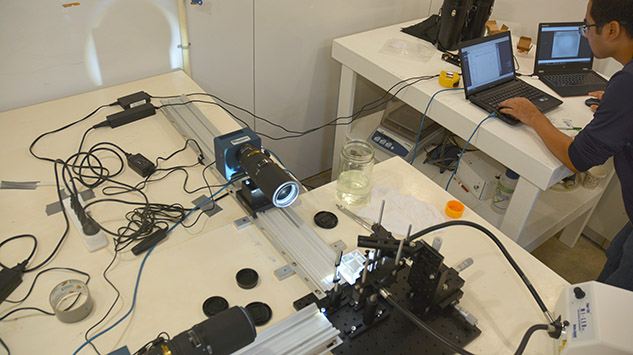Posted in:
Inspired by Sea Butterflies

BIOS oceanographer Amy Maas received $75,000 in June from the National Academies Keck Futures Initiative to continue her research examining the swimming patterns and movements of sea butterflies.
Sea butterflies, also called pteropods, are a type of tiny snail that swim with a flapping motion reminiscent of terrestrial insects. Maas’s study will examine the physics and ecology of this motion to encourage conservation of sea butterflies, which possess delicate shells that are weakened by increases in ocean acidity.
It may also inspire the design of a small hybrid vehicle, known as a biomimetic robot, capable of working in air and at sea.
“Robotic animals can help researchers better understand locomotion, evolution, and simply how certain animals go about their amazing, unique, individual daily lives,” Maas said. Sea butterflies, which can range in size from microscopic to larger than a peppercorn, spend their lives swimming in open water and serve as a primary food source for larger marine life, including salmon, sharks, and whales.
Despite their size, they swim enormous distances each day, as far as a quarter mile, to feed and hide from predators.
The grant supports Maas and colleagues from the University of South Florida and Oregon State University, and funds pairing a camera analysis of swimming motions in the water column with physiology to determine how shell shape (ranging from cones to spirals, depending on the species) influences swimming, and thus dictates physiology and habitat range, Maas said.
The team began work in May to measure and plot the movements (known as swimming kinematics) of a variety of sea butterflies, as well as to study how water moves around them (called a flow signature). Maas joined the BIOS staff in February 2015, after researching sea butterflies as a doctoral student and researcher at Woods Hole Oceanographic Institution.
Tagged: